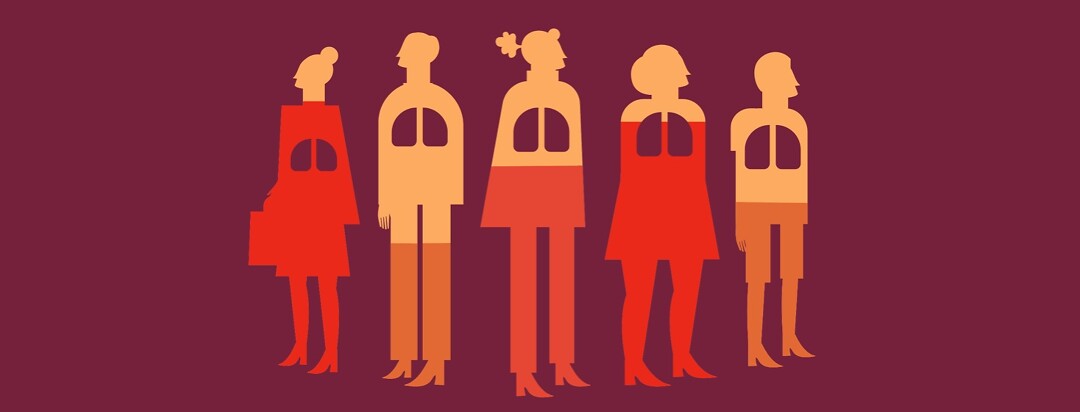U.S. Preventative Services Task Force Issues New Recommendation for Lung Cancer Screening
The United States Preventive Services Task Force (USPSTF) has issued 2021 guidelines for lung cancer screening. The last change made to these guidelines was in 2013.
What is a screening test?
A screening test is for people at risk for a condition but who have not yet been diagnosed. Screening tests attempt to catch a condition in its early stages. Examples of screening tests include colonoscopy for colon cancer and Pap smear for cervical cancer.
Lung cancer screening
In lung cancer, the common screening test is a computed tomography (CT) scan. A CT scan is similar to an X-ray. However, CT scans create a 3-dimensional image of the body and provide more detail. Because of this, CT scans expose a person to more radiation. There is a lower-radiation version of CT called a low-dose computed tomography (LDCT) scan. This is used in lung cancer screening.
If a person’s lung cancer is detected earlier, their chance of successful treatment is higher. For example, a stage 1 lung cancer found with screening may be cured with surgery or radiation. However, if a person was not screened and their cancer was found later on, the chances the cancer has spread are higher. More advanced cancers are harder to treat.
How have the recommendations changed?
The 2021 recommendations encourage yearly LDCT scans in people between the ages of 50 and 80 years old who have smoked 20 pack-years. This includes people who have quit smoking in the last 15 years. The guidelines are not meant for people who have quit smoking more than 15 years ago.1,2
One pack-year means smoking 1 pack of cigarettes a day for a year. Someone with a 20 pack-year smoking history has smoked a pack a day for 20 years. It can also mean smoking 2 packs a day for 10 years or any other combination that averages to 20 pack-years.1,2
This is different from the 2013 guidelines in age and smoking history. The 2013 guidelines included people between the ages of 55 and 80 years old. Also, the older guidelines were for people with a 30 pack-year history instead of 20 pack-years.1,2
Why are these changes important?
The 2021 guidelines will include younger people and people with less of a smoking history. The number of people eligible for screening will almost double.1-3
This change is especially important for women and minority groups. Both of these groups tend to smoke less than white men, who make up a large percentage of those previously eligible for screening.1-3
Although women and Black people may smoke less on average, they are still at risk. Research has suggested that Black people specifically have a higher risk of developing lung cancer than white people. This is true even when they have less of a smoking history.1-3
What are the risks of these changes?
As with any medical test, there are risks of increased screening. Although experts say the chances are low, it is possible to have false-positive screening tests. This may mean finding something that is not cancerous but looks like a potential cancer. Examples include benign lung nodules and infections, among others.1,2
Positive screening tests often lead to more scans, biopsies, or even surgery. These can be invasive, risky, and costly. Additionally, potentially having cancer can lead to anxiety and distress. Further tests are helpful if a person does have cancer. However, all of these efforts and stress may be unnecessary if the screening test was a false-positive.1,2
Radiation exposure can also cause lung cancer. Some experts have wondered if yearly CT scans actually increase risk. However, the amount of radiation in LDCT is thought to be even lower than the background radiation a person is exposed to each year. While there is still a risk that yearly CT scans could lead to cancer, the estimated number of these cases is still less than the potential deaths prevented.1,2
In all cases, a person and their doctor can discuss the personal risk of lung cancer, as well as the risks and benefits of screening.
What is the U.S. Preventative Services Task Force?
The USPSTF is a group of independent medical experts. They review data and make decisions on preventive medicine and treatment options. They recommend screening tests, counseling topics, and more. They grade their recommendations A, B, C, D, and I (insufficient) based on the data used and how confident they are in the potential benefits. A and B are the strongest grades.1,2
The 2021 lung cancer screening guidelines have a grade B recommendation.1,2

Join the conversation